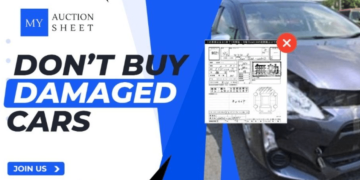It’s officially summer season, no more sweaters. This provides the idea that in certain areas within the country, it’s time for some beach driving, but keep remember to drive safely on the beach. Rather than piling the towels, Kan Jam, bocce balls, tubs, and coolers of sunblock into the cart and hiring a group of oxen to pull these things from a far off parking area to your desired patch of sand, you truly need to abandon the whole thing inside the vehicle, get the pass and drive on out to find the place of complete bliss and peace.
Beach driving suffuses your summer season amusement with a sprint of adventure. Salty breeze, windows down, and nothing except clear blue water ahead. But whether or not you’re driving on the seashore for the love of it, or out of necessity, there are protection and environmental concerns that want to be heeded. Even the most skilled drivers can make a mistake and it continually will pay to be prepared.
Following are some key points which you need to follow:
Check The Signage:

All the seashores that have public access are considered public roads. However, regardless of whether or not they are generally used through vehicles. This shows that the policies of the road apply even if there is no signage. You can take a look at the neighborhood council to see if they have any particular bylaws if you’re now not positive.
For instance; two beaches in Auckland require authorization e.g. Muriwai and Karioitahi. You should buy one before you drive on the beach. On the other hand, all different seashores in the Auckland location are off-limits for riding besides for launching or retrieving a boat. Some beaches in Northland have a 30km/h limit. You can power on the 107-kilometer Ripiro seaside in Northland which stretches from the Maunganui Bluff in the north, proper down to Pouto in the south.
Also Checkout: How to Check Car Registration Online In Pakistan
Insurance Policy:
It may eliminate all the beaches or some precise beaches or permit solely precise motors on beaches. If you are not protected and get stuck up, or got an accident, then in such case your insurance company won’t pay for you.
Also Checkout: Have A Look At How to Fix a Touch Screen Car Stereo
Wildlife:

Watch out while driving and never drive near nesting birds such as oystercatchers and dotterels. They nest above excessive waterline therefore it’s extremely to see. Their chicks and eggs are particularly challenging to see. Additionally, some other animals also use beaches, such as seals.
On some beaches, dogs are banned. You should take a look at the nearby authority whether or not this also applies if they are in your vehicle. You should endure the idea that you shouldn’t go away with your dog in your auto on a warm day, anyway. Don’t throw pieces of leftover food as it encourages the non-native animals which includes rats IT makes it difficult for the insects present in dunes.
Take all the garbage with you and don’t throw anything on the beach as it will be harmful to animals.
Also Checkout: How To Get Cigarette Smell Out Of Car
Other Important Factors:
Don’t make surprising turns as your wheels can dig in on the sand and (if you have an automobile with an excessive center of gravity like an SUV) you should roll it pretty easily. Keep your headlights on to enhance visibility. Watch out for different seashore users. Be cautious of now not getting tangled in different people’s fishing lines. Avoid what seems to be like shallow puddles as they can occasionally be very deep and it will rip the wheel off your vehicle.
Also, be on the lookout for submerged objects. There are lots of rusting motors buried on seashores like Muriwai and every so often bits of them poke up out of the sand. Keep a watch out for altering surfaces. Some seashores are very compacted and effortless to pressure on however can emerge as very tender pretty quickly, even to the point of having quicksand.
Also Checkout: How To Give A New Look To Your Old Car
Safety Measures:
Take a spade so that if you do get stuck, you can dig yourself out. Don’t spin your wheels in the rut or otherwise you’ll dig yourself a hole that will be extra and greater challenging to power out of. If you begin to get stuck, straighten your wheels out (unless this capacity you’re heading into worse terrain), as this will assist you to preserve momentum. If you do get stuck, dig a channel out in the front of every wheel and clear the sand from below the vehicle.
Take some extra food in case you do get stuck, and take any different applicable precautions – expect that you would possibly have a hassle and will have to wait for rescue. It can assist to lighten the load as it reduces your risk of getting bogged down
Also Checkout: How To Take Care Of Your Car Tyres In Summer
Vehicle Care:
Wash the exterior and underside of your car thoroughly when you get back. Salty sand is incredibly harmful. You’ll most probably want to water blast the underside until you’ve solely pushed very gently. If you’ve let your tires down, pump them lower back up once more.










